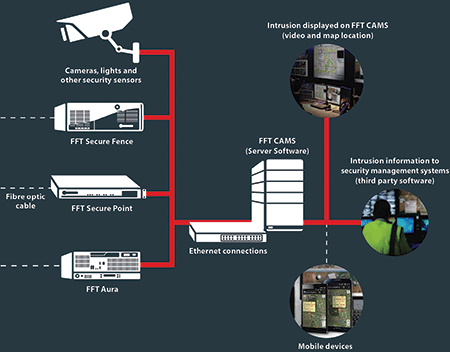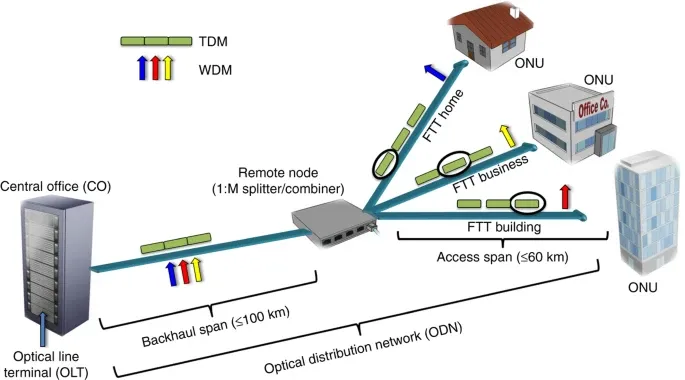Why Fiber Optic Safety And Security Systems Are the Future of Security
The change to fiber optic protection systems marks a considerable innovation in the world of protection, driven by their phenomenal information transmission capabilities and strength to external interferences. As the landscape of safety evolves together with emerging innovations such as AI and IoT, the potential for fiber optics to enhance and redefine safety and security frameworks ends up being significantly noticeable.
Advantages of Fiber Optic Equipments
One of the main benefits of fiber optic systems is their exceptional bandwidth capacity, which promotes the transmission of huge quantities of information over lengthy ranges without considerable loss. This particular is particularly beneficial for protection applications that need the continuous monitoring and transfer of high-definition video clip feeds, sensor data, and various other important info. Fiber optics can suit the growing demands of modern-day security systems, making certain that data remains undamaged and trusted.
Additionally, fiber optic cable televisions are less at risk to electromagnetic disturbance, which can be a significant problem in atmospheres with various electronic devices. This resistance boosts the stability of the data being transmitted, therefore lessening the danger of data violations or system failings. Fiber optic systems are inherently much more protected than conventional copper cable televisions, as tapping right into a fiber optic line without detection is exceedingly hard.
The resilience of fiber optic wires also adds to their allure. They are resistant to environmental aspects such as moisture and temperature changes, decreasing upkeep costs and enhancing system long life. Overall, these advantages setting fiber optic systems as a durable and effective option for modern-day safety and security frameworks, making sure reliable and protected data transmission.
Enhanced Data Transmission Rate

The capacity to send substantial amounts of information rapidly assists in the seamless combination of high-definition video clip feeds and advanced analytics. Protection systems can currently process and analyze information in real-time, enhancing reaction times and situational understanding. Furthermore, fiber optic links sustain longer transmission distances without deterioration of signal top quality, making them perfect for expansive security networks.
The boosted rate of fiber optic systems not only enhances the effectiveness of safety operations yet also reduces latency. This is specifically important in critical circumstances where prompt decision-making can protect against safety and security violations or alleviate potential hazards. As companies remain to prioritize safety and performance, the demand for fast and dependable data transmission will most certainly solidify fiber optic systems as a foundation of modern-day safety and security infrastructure.
Resistance to Interference
Fiber optic safety and security systems continually show remarkable resistance to electromagnetic disturbance, a crucial advantage in atmospheres prone to electronic noise. Unlike traditional copper cables, which next can be adversely influenced by electro-magnetic areas, radio frequency interference, and other forms of electric disturbance, fiber optic cable televisions make use of light to transmit information. This inherent residential or commercial property guarantees that the signals stay clear and unaltered, no matter surrounding electronic task.
Using glass or plastic fibers in fiber optic technology creates a barrier versus disturbance, permitting for dependable data transmission even in tough circumstances such as industrial centers, urban locations with high digital traffic, or areas near radio towers. This particular considerably minimizes the possibility of signal deterioration or loss, making fiber optic systems particularly ideal for safety and security applications where integrity and precision of information are paramount.
In addition, this resistance to interference improves the total performance and integrity of safety and security systems, ensuring that monitoring and sharp systems work effortlessly. In a globe where protection is progressively endangered by sophisticated innovations, the durability of fiber optic systems stands out as a pivotal feature, strengthening their condition as an essential element of contemporary protection framework.
Cost-Effectiveness Over Time
Substantial price financial savings can be achieved in time with the implementation of fiber optic protection systems. While the first financial investment may seem greater compared to conventional copper-based systems, the long-term financial advantages come to be evident via reduced operational and maintenance prices (fiber security). Fiber optic wires go to the website are naturally more durable and much less at risk to environmental elements, which converts to decrease substitute and repair service costs over their lifespan
Furthermore, fiber optic systems need much less power to operate, which better reduces power prices. Enhanced information transmission abilities enable fewer repeaters and amplifiers, lessening equipment financial investment and enhancing installation procedures. The scalability of these systems additionally adds to cost-effectiveness, as companies can increase their protection framework without incurring significant additional expenses.
One more variable to think about is the boosted efficiency in monitoring and feedback abilities that optical fiber offer. Improved real-time data transmission can cause quicker incident feedback times, possibly mitigating losses and obligations linked with safety and security breaches. Altogether, the long-lasting advantages of fiber optic safety systems not only justify the preliminary expense but additionally place them as an economically sensible selection for organizations looking for durable defense remedies.

Future Innovations in Protection
Advancing modern technologies are readied to reinvent protection systems, incorporating expert system (AI) and equipment understanding to boost danger discovery and response capabilities. These innovations will enable protection systems to analyze vast amounts of information in real-time, identifying patterns and abnormalities that show prospective risks. This proactive technique will certainly enable much faster decision-making and extra effective event reactions.
In addition, the consolidation of the Web of Points (IoT) is paving the method for interconnected safety tools, offering detailed surveillance and monitoring. Smart sensors can communicate information about environmental adjustments, while automated notifies can notify safety and security employees quickly of dubious tasks.
Furthermore, the advancement of biometric modern technologies will certainly additionally strengthen security mechanisms. Face recognition, finger print scanning, and retina identification are ending up being much more advanced, More about the author offering layers of authentication that are tough to bypass.
Conclusion
To conclude, fiber optic safety systems represent a substantial improvement in protection modern technology, supplying unrivaled information transmission speed, resistance to electro-magnetic interference, and lasting cost-effectiveness. As the need for sophisticated protection services remains to expand, the combination of fiber optics with emerging modern technologies such as AI, IoT, and biometrics will better improve protection infrastructures (fiber security). The mix of these advancements will make sure a more safe and receptive atmosphere, strengthening fiber optics as a cornerstone of future security systems